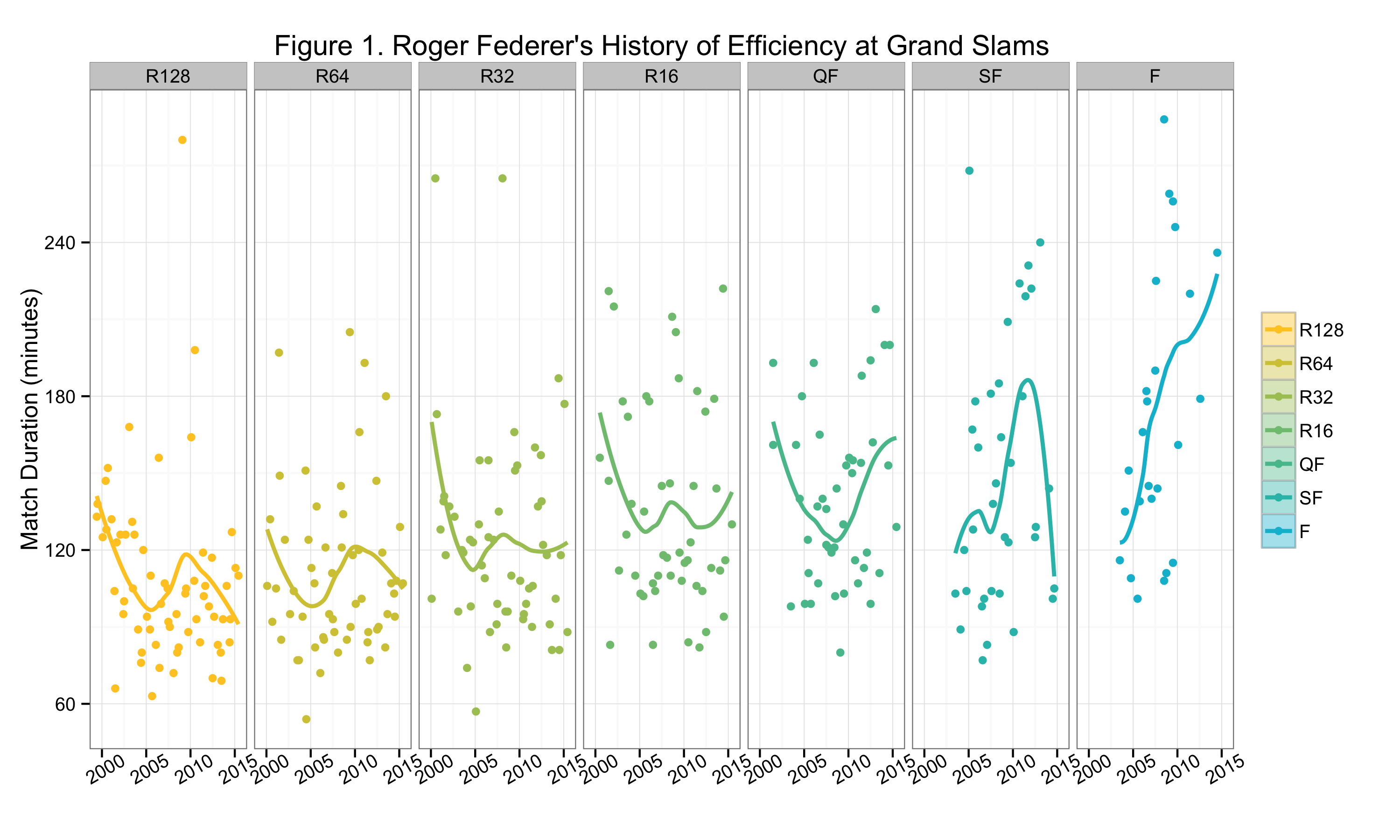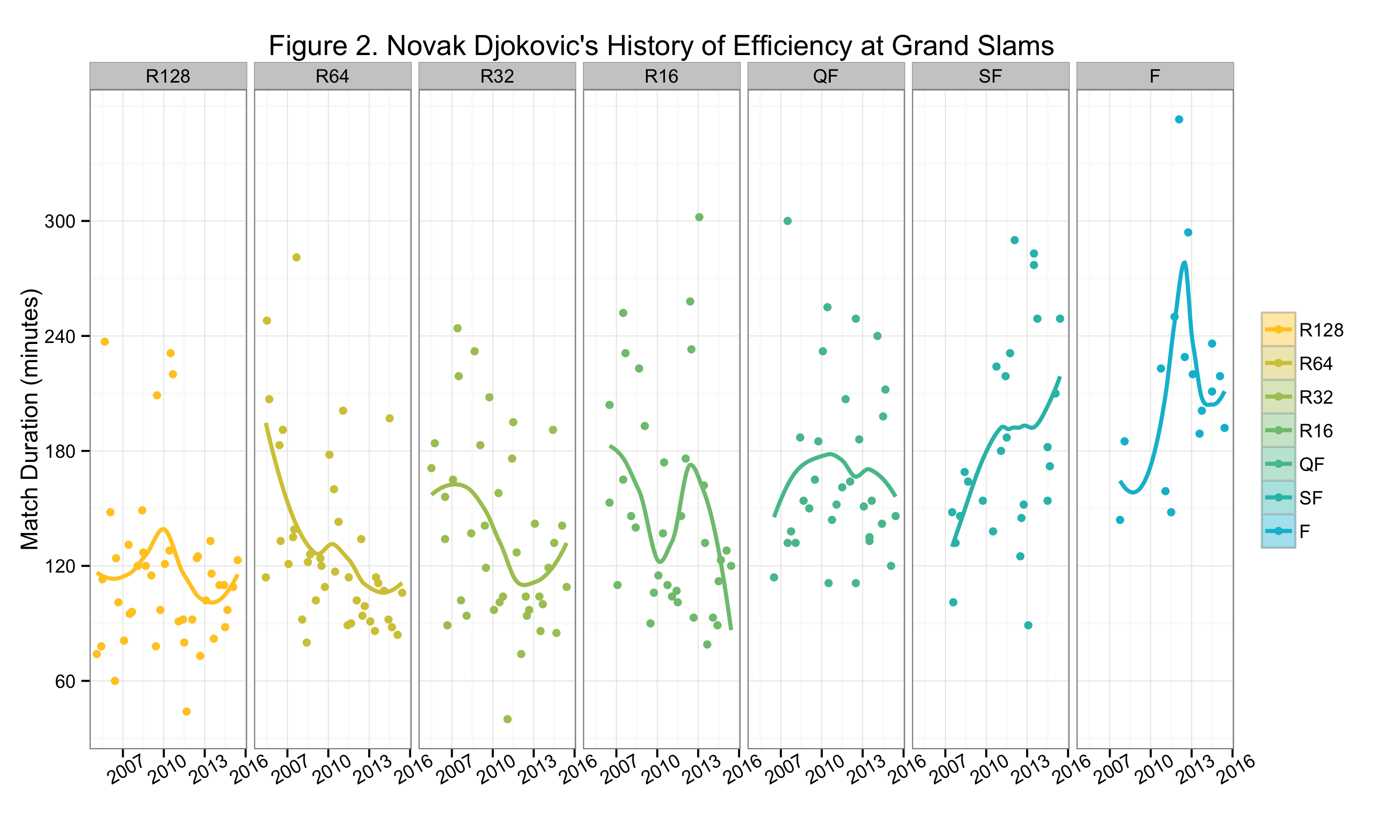A New Era of Efficiency for Roger Federer
13 Sep 2015Today, Roger Federer will make his first appearance at a US Open final since 2009, where he lost to Juan Martin Del Potro. Since that match, Federer has reached the finals of 5 other Grand Slams but has not won a title since his 2012 victory at Wimbledon over Andy Murray. Following that title win, he has advanced to a final at two Slams, the 2014 and 2015 Wimbledon Championships; in each case, losing to Novak Djokovic.
Federer will have his opportunity to turn the tables today when he faces Djokovic on hard court. Federer beat Djokovic in their last appearance at the 2015 Western & Southern Open that took place just days before the US Open got underway. But you would have to go back to 2012 Wimbledon to find the last time Federer beat Djokovic at a Slam.
At age 34 and no Slam titles since 2012, why would anyone expect this US Open final to be different for Federer? One sign that this Major could be different is that Federer has made some dramatic shifts in the pace of his game that are allowing him to play with more speed and efficiency than at any other time in recent years.

In making his way to the 2015 US Open final, Federer hasn’t dropped set and has taken a total of 599 minutes (just under 10 hours) to finish off 6 opponents, and has spent 151 minutes less time on court than Djokovic. This has been the fastest road to the US Open finals in Federer’s career. In fact, he has only played faster at the Wimbledon 2006, 2007, and 2008 Championships. So, in a way, Federer has made playing on hard court like playing on grass.
One might attribute Federer’s new efficiency to the introduction of the “SABR”, but Figure 1 shows that this trend has been in the making for some time before that. While most of the top players have a pattern of match time more like Djokovic’s (Figure 2) that is characterized by short (<2 hour) matches in the early rounds and increasingly longer more competitive matches in later stages. Since 2012, Federer has veered away from this stereotypical pattern in the semifinals.

Has this accelerated style of play improved Federer’s win ability? Figure 3 zooms in on the pace of his semifinal and final performance in more detail. It shows that he has won (big circles) almost 50% of semifinals at Slams in this post 2012 faster-paced period of play. The benefits haven’t yet materialized but that could be because he hasn’t simply had time to put this new strategy to the test on the biggest stages. Today’s match might just be that chance.
Djokovic, by contrast, has had a pretty steady pace of 4-hour+ matches at the last stages of Slams since 2010 (Figure 4). Djokovic, like an seasoned ultra-marathoner, seems to thrive in longer and more-grueling contests.
If Federer can dedicate the pace in today’s final, it could prove to be a winning strategy.
If you liked this story, share it with your followers or follow this site @StatsOnTheT on Twitter.


